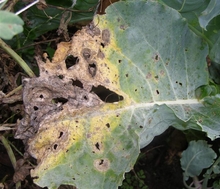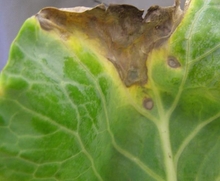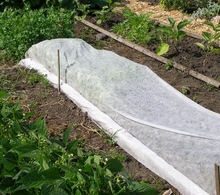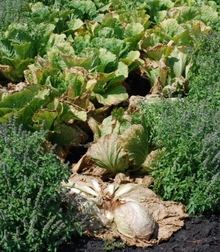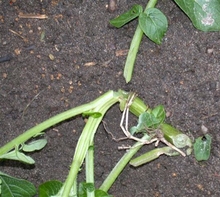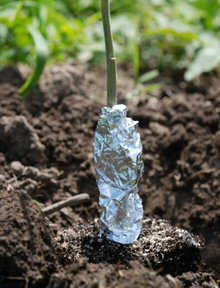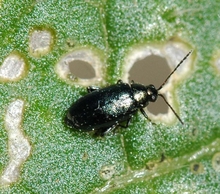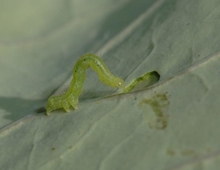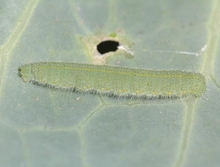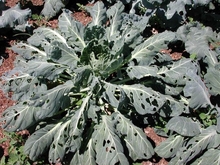Quick facts
- This page highlights non-chemical practices to prevent or manage common insect and disease problems of broccoli, cabbage and cauliflower.
- These insects and diseases are common on many plants in the cabbage family, including kale, radish, turnip, rutabaga, Brussels sprouts, arugula, collards and mustard greens.
- For more detailed information follow the links in each section.
- Click on an image to enlarge it.
- See Growing healthy vegetables for more detailed information on how to keep your garden disease and pest free.
Black rot and gray leaf spot
- Do not save seed from infected plants.
- Purchase high-quality seed. Some companies certify seed to be disease-free.
- Use drip irrigation.
- Space plants for good air movement and drying.
- Do not work in plants when wet.
- Control weeds in and around crops.
- Remove and destroy or bury infected plants after harvest.
- Do not plant members of the cabbage family in the same location for 3-4 years.
Cabbage maggots
- Do not use animal or green manure in spring.
- Delay planting cabbage family vegetables (until after June 1).
- Remove and destroy host plants in the fall.
- Cover plants with a row cover (lightweight fabric) in spring.
- When using row covers, do not plant vegetables in the cabbage family in the same area two years in a row.
More information on cabbage maggots.
Cutworms
- Remove weeds and plant residue.
- Till garden before planting.
- Place cardboard collars or aluminum foil around plant stems when planting transplants.
More information on cutworms.
Flea beetles
- Plant as late as possible.
- Control weeds and remove old plants.
- Cover plants with a row cover (lightweight fabric) until harvest.
More information on flea beetles.
Cabbage loopers and cabbage worms
- Destroy old plants after harvest.
- Handpick caterpillars and place them in a container of soapy water.
- Cover plants with a row cover (lightweight fabric) until harvest.
More information on cabbage loopers and cabbageworms.
Reviewed in 2021


